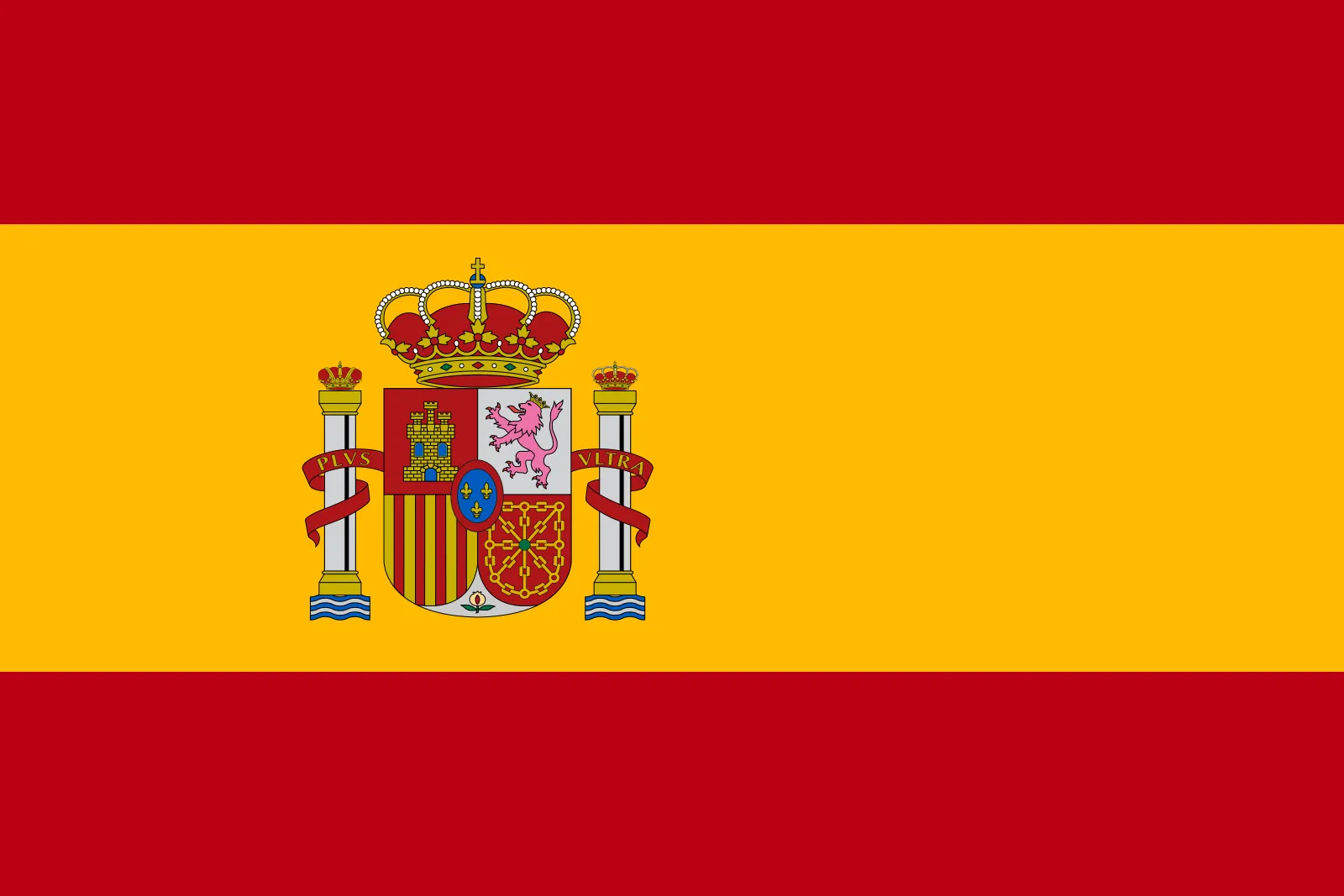Triangolo d’Oro con Vrindavan: viaggio spirituale e culturale
Il Triangolo d’Oro con Vrindavan è un itinerario perfetto per chi cerca un’esperienza autentica che unisce storia, devozione e bellezza architettonica. Questo viaggio permette di esplorare le città simbolo dell’India del Nord — Delhi, Agra e Jaipur — arricchite dalla magica atmosfera di Vrindavan, città sacra legata alla vita di Krishna.
Il percorso inizia a Delhi, con i suoi monumenti iconici come la Jama Masjid, India Gate e il Qutub Minar. Da lì si prosegue verso Agra, per ammirare il maestoso Taj Mahal, simbolo d’amore eterno. La terza tappa è Jaipur, la Città Rosa, famosa per il Forte Amber e il Palazzo dei Venti.
La vera gemma spirituale di questo tour è Vrindavan, un luogo carico di misticismo dove, secondo la tradizione, Lord Krishna trascorse la sua infanzia. Tra templi antichi, canti bhajan e cerimonie al fiume Yamuna, l’atmosfera di Vrindavan regala pace e connessione interiore, rendendo il viaggio un’esperienza indimenticabile.
Il Triangolo d’Oro con Vrindavan è ideale per chi desidera scoprire non solo la ricchezza culturale dell’India, ma anche la sua anima spirituale.
Tutti i nostri tour sono personalizzabili al 100%
Triangolo d’oro con Vrindavan – 07 notti/08 giorni
Prezzo da riconfermare – 380 Euro/pp minimo -02 persone
Delhi-Jaipur-Abhaneri-Fatehpur Sikri-Agra-Vrindavan-Delhi
Giorno 1 – Arrivo a Delhi
Arrivo all’aeroporto internazionale di Nuova Delhi.
Dopo aver completato le procedure di immigrazione e ritirato i bagagli, un nostro rappresentante ti aspetterà fuori dal Terminal.
Check-in alle 14:00 / Check-out alle 12:00.
Jama Masjid: la moschea più grande e famosa dell’India, si trova non lontano dal Forte Rosso e da Chandni Chowk, il mercato più antico e più frequentato della Vecchia Delhi. Costruita da Shah Jahan nel XVII secolo, la Jama Masjid è tra le più frequentate di Delhi per pellegrini e turisti.
Vecchia Delhi: l’atmosfera caratteristica dei mercati di Delhi può essere assaporata al meglio a Chandni Chowk e in generale nelle strette vie che pullulano a tutte le ore di venditori e merci di ogni genere. Secondo la leggenda, proprio come la Jama Masjid e il Forte Rosso, anche il mercato di Chandni Chowk fu fondato durante il regno dell’imperatore Mughal Shah Jahan.
Forte Rosso (sosta per foto): – Il Forte Rosso è una delle opere commissionate dall’imperatore Moghul Shah Jahan nel XVII secolo, la sua costruzione richiese circa 9 anni di lavoro e costò 10 milioni di rupie.
Raj Ghat: monumento commemorativo di Raj Ghat che commemora il luogo della cremazione del Mahatma Gandhi, l’uomo noto come il Padre della Nazione e simbolo del pacifismo mondiale.
Tempio di Laxmi Narayan: – Il Signore Narayan è con la sua consorte, la dea Laxmi (la dea della prosperità), da qui il nome del tempio.
India Gate: – Nel centro di Nuova Delhi si erge l’India Gate, alta 42 m, un arco simile a un “Arco di Trionfo” al centro di un incrocio. Quasi simile alla sua controparte francese, commemora i 70.000 soldati indiani che persero la vita combattendo per l’esercito britannico durante la prima guerra mondiale.
Casa del Presidente, vecchio e nuovo Palazzo del Parlamento (sosta per le foto).
Gurudwara Bangla Sahib: – è uno dei più importanti gurdwara Sikh, o luoghi di culto Sikh, associato all’ottavo Guru, Guru Har Krishan, ed è anche noto per la piscina all’interno del suo complesso, nota come “Sarovar”.
Pernottamento a Delhi.
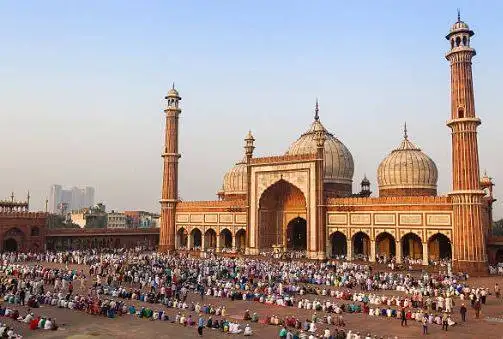
Giorno 2 – Delhi-Jaipur (281 Km, 5 Ore)
Dopo la colazione, partenza per Jaipur.
Birla mandir :- Birla Temple, Jaipur Ai piedi del forte Moti Dungri si trova il Birla Temple. Questo tempio è una delle attrazioni più belle di Jaipur. Il Birla Temple di Jaipur è bellissimo quando è illuminato di notte.
Mercato locale: – Jaipur, famosa per i gioielli e gli abiti, è la meta preferita da chi ama entrambi. Ci sono molti mercati famosi a Jaipur che vendono pietre preziose, gemme, pietre semipreziose e gioielli.
Pernottamento a Jaipur.

Giorno 3 – Jaipur
Dopo la colazione inizia la giornata.
Amer Fort: – Amer è una città con una superficie di 4 chilometri quadrati (1,5 miglia quadrate) situata a 11 chilometri (6,8 miglia) da Jaipur, la capitale del Rajasthan. Situata in cima a una collina, è la principale attrazione turistica nell’area di Jaipur. La città di Amer fu originariamente costruita da Meenas e fu in seguito governata da Raja Man Singh I (21 dicembre 1550 – 6 luglio 1614).
Jal Mahal ( sosta fotografica all’aperto): – Jal Mahal è un’opera d’arte situata nel mezzo del lago Man Sagar, il palazzo ti darà l’illusione di galleggiare quasi sulla superficie del lago e in quel momento la vista ti lascerà senza fiato.
City Palace: – Jaipur, che comprende i palazzi Chandra Mahal e Mubarak Mahal e altri edifici, è un complesso di palazzi a Jaipur, la capitale dello stato del Rajasthan, in India. Era la sede del Maharaja di Jaipur, il capo del clan Kachwaha Rajput. Il palazzo Chandra Mahal ora ospita un museo, ma la maggior parte è ancora una residenza reale.
Jantar Manta r :- è una meridiana equinoziale, costituita da un gigantesco gnomone triangolare con l’ipotenusa parallela all’asse terrestre. Ai lati dello gnomone c’è un quadrante di un cerchio, parallelo al piano dell’equatore. Lo strumento è utilizzato per misurare l’ora del giorno, corretta a mezzo secondo e la declinazione del Sole e di altri corpi celesti.
Hawa Mahal (sosta per le foto): – Hawa Mahal (traduzione inglese: “Palazzo dei venti” o “Palazzo della brezza”) è un palazzo a Jaipur, in India, da cui il suo nome perché era essenzialmente un alto muro divisorio costruito in modo che le donne della famiglia reale potessero osservare le feste di strada.
Galtaji Temple: – Il tempio è anche conosciuto come il tempio delle scimmie, poiché vi sono molte scimmie. Il tempio è dedicato a Lord Hanumana, fondato nel XVI secolo da Diwan Rao Kriparam, consigliere del re Sawai Jai Singh II.
Pernottamento a Jaipur.
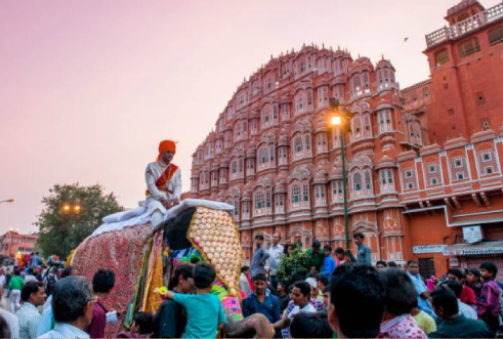
Giorno 4 – Jaipur-Abhaneri-Fatehpur Sikri-Agra (241 km 4 ore 30 minuti)
Dopo la colazione, partenza per Agra.
Lungo il percorso visiteremo il famosissimo Chand Baori situato nel piccolo villaggio di Abhaneri. Abhaneri: – è famoso per i ‘bhaori’, pozzi scavati dagli indigeni per raccogliere l’acqua piovana. Queste strutture, a seconda del periodo dell’anno, vengono utilizzate come luoghi per rinfrescarsi o come serbatoi d’acqua. Chand Baori è il più popolare dei pozzi della regione, ed è uno dei più profondi e grandi dell’India.
Fatehpur Sikri: – Costruita dall’imperatore moghul Akbar a metà del XVI secolo, Fatehpur Sikri (che significa Città della Vittoria) è stata la capitale del suo impero per 15 anni. Costruita in stile indo-islamico, Sikri è un complesso in arenaria rossa pieno di palazzi, moschee, templi e altre strutture.
Pernottamento ad Agra.
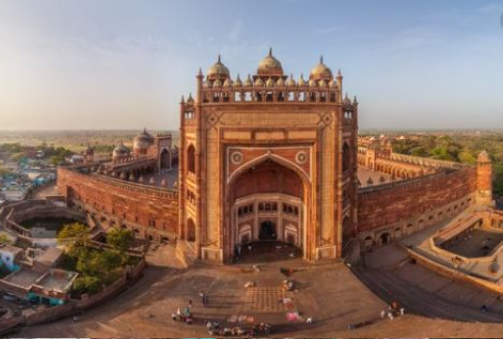
Giorno 5 Agra
Dopo la colazione inizia la giornata.
Taj Mahal: – è una delle sette meraviglie del mondo e un luogo da non perdere in India. È l’esempio vivente della vita romantica di Shah Jahan e della sua bellissima moglie Mumtaz Mahal. La costruzione di questo splendido monumento fu completata nel 1653 d.C. Il re Mughal Sha Jahan lo costruì come luogo di riposo finale per la regina Mumtaz.
Agra Fort: – Agra Fort situato sulle ripide rive del fiume Yamuna, questo forte a forma di luna fu commissionato da Akbar, uno dei più grandi imperatori Mughal, nel 1565. Circondato da possenti mura, il complesso ha numerosi palazzi, giardini, sale e altre strutture di siti storici all’interno del forte.
Itimad ud daula: – Costruita da Nur Jahan, in memoria del padre Ghias-ud-Din Beg, a cui fu dato il titolo di ‘Itimad-ud-Daulah’, che significa ‘Pilastro del Governo’. È la prima tomba ad essere costruita in marmo bianco anziché in arenaria rossa. Segna l’allontanamento dagli edifici in arenaria rossa dell’architettura Mughal.
Mehtab Bagh:- Questo splendido giardino si trova sulla riva occidentale del fiume Yamuna ed è in perfetto allineamento con i giardini del Taj Mahal situati dall’altra parte del fiume. Distribuito su 300 mq, Mehtab Bagh è stato il sito di diversi scavi intriganti
Sadar Bazaar: – Situato vicino alla stazione ferroviaria di Agra Cantonment, Sadar Bazaar è il posto più famoso di Agra che attrae un buon numero di turisti. Se stai cercando prodotti come artigianato, indumenti, deliziosi dolci, prodotti in pelle, allora questo posto può essere la scelta migliore per te da dove puoi trovare le migliori offerte possibili.
Pernottamento ad Agra.
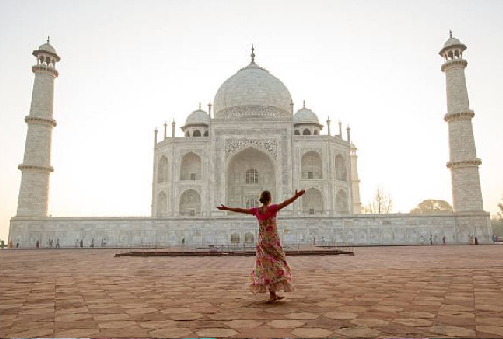
Giorno 6 – Agra-Vrindavan-Delhi (237 KM, 4 ore)
Dopo la colazione, partenza per Delhi.
Lungo il tragitto visita Vrindavan: questo è il luogo in cui si ritiene che Lord Krishna abbia trascorso la sua infanzia. Il nome Vrindavan deriva dalle parole “vrinda”, che significa basilico, e “van” che significa foresta. In questo caso particolare, si ritiene che la foresta a cui si fa riferimento sia Nidhivan o Seva Kunj. Qui, i devoti si spalmano la polvere sulla fronte perché è considerata sacra. C’è un tesoro di bellissimi templi dedicati a Lord Krishna a Vrindavan, tra cui Banke Bihari, ISKCON tra gli altri.
Prem Mandir :- Prem Mandir, noto anche come Tempio dell’Amore Divino, è dedicato alla Dea Radha e al Signore Krishna, al Signore Rama e alla Dea Sita. È stato modellato e progettato da Jagadguru Shri Kripaluji Maharaj nel 2001 e si estende su 54 acri.
Tempio Iskcon: – Il tempio Iskcon Vrindavan Sri Krishna Balrama è riconosciuto come il primo tempio costruito dall’International Society for Krishna Consciousness (ISKCON). Costruito nel 1975 dal culto ISKCON, le fondamenta del santuario furono gettate da Swami Prabhupada (fondatore dell’ISKCON) in persona.
All’arrivo a Delhi visita il tempio di Akhshardham: – Akshardham’ significa la dimora divina di Dio. È salutato come un luogo eterno di devozione, purezza e pace. Swaminarayan Akshardham a Nuova Delhi è un Mandir: una dimora di Dio, un luogo di culto indù e un campus spirituale e culturale dedicato alla devozione, all’apprendimento e all’armonia.
Nota: – Non sono ammessi abiti senza maniche, pantaloncini o shorts. Non sono ammessi prodotti elettronici.
Trasferimento in hotel.
Pernottamento a Delhi.
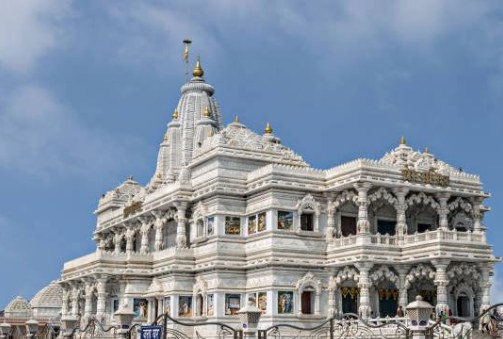
Giorno 7 – Delhi-Italia
Trasferimento all’aeroporto di Delhi.
Ciao India Tours vi augura un piacevole viaggio.
Inclusioni:
- 6 notti di sistemazione in hotel 3 stelle/di interesse storico con prima colazione, incluse tutte le tasse vigenti.
- Tutti i trasferimenti dall’aeroporto/stazione all’hotel e viceversa come da programma.
- Incontro e assistenza da parte del nostro rappresentante all’arrivo/partenza in aeroporto.
- Tutti i trasferimenti come da programma con grande auto dotata di aria condizionata.
- Il treno da Agra a Varanasi.
- Il volo da Varanasi a Delhi.
- Guida turistica di lingua italiana durante il viaggio.
- Wi-Fi in macchina.
- Una bottiglia d’acqua a persona al giorno.
- Tutte le tasse incluse.
- Pedaggio, parcheggio, carburante, alloggio per l’autista.
Esclusioni:
- Visto, Volo internazionale, Assicurazione sanitaria, Cancellazione/modifica di voli, treni, Bevande alcoliche, Pranzo e cena, Mance, Biglietti per monumenti e attività, Spese personali, Macchina fotografica ecc.
- Tutto ciò che non è incluso nelle inclusioni.
Contattaci per richiedere un preventivo tramite WhatsApp, Chat, modulo di richiesta o e-mail.
WhatsApp – +919971981381
E-mail – info@ciaoindiatours.com
FAQ – Triangolo d’Oro con Vrindavan
Qual è il periodo migliore per visitare Vrindavan?
Da ottobre a marzo, quando il clima è fresco e ideale per esplorare.
Quanto dura il tour Triangolo d’Oro con Vrindavan?
Di solito dura tra 8 e 10 giorni, a seconda del numero di giorni dedicati ai templi e cerimonie.
Vrindavan è adatto anche alle famiglie?
Sì, Vrindavan è perfetto per tutti, adulti e bambini, grazie all’atmosfera serena e ai luoghi spirituali.











